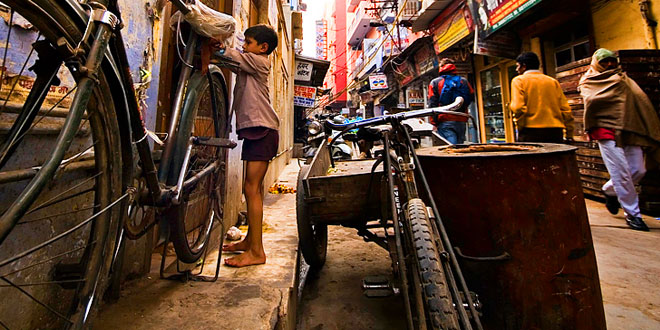Question: What did historian Gareth Stedman Jones say about the ‘City of London?
Answer:
- London was a city of clerks and shopkeepers.
- It was a city of small masters and skilled artisans.
- It was a city of growing number of semi skilled and sweated out workers, of soldiers and servants, of casual labourers, street sellers and beggars.
- Apart from the London dockyards, five major types of industries that employed large number of people were: Clothing and footwear, wood and furniture, metals and engineering, printing and stationery and precision products such as surgical instruments, watches and objects of precious metal.
- During the Fire World War. London began manufacturing motor care and electrical goods and the number of large factories increased until they accounted for nearly one- third of all jobs in the city.
Question: Explain the rise of London as a modem city.
Or
Explain the expansion of London over nineteenth century.
Or
Explain any three reasons for which the population of London expanded during the 19th century.
Answer:
- By 1750, one out of every nine people of England and Wales lived in London. It was a colossal city with a population of about 6,75,000.
- Over the nineteenth century. London continued to expand Its population multiplied fourfold in the 70 years between 1810 and I860, increasing from 1 million to about 4 million.
- The city of London was a powerful magnet for migrant populations, even though it did not have large factories.
- The nineteenth century London, was a city of clerks and shopkeepers, of small masters and skilled artisans, of a growing number of semi skilled and sweated out workers, of soldiers and servants, of casual labourers, street-sellers and beggars.
- During the First World War (1914-18). London began manufacturing motor cars and electrical goods, and the number of large factories increased until they accounted for nearly one-third of all Jobs in the city.
Question: Explain any four characteristics of marginal groups in London.
Answer:
- Most of the poor people were criminals who lived by stealing.
- A large number of women worked in factories in the late 18th and the early 19th century.
- With technological developments, women gradually lost their industrial jobs, and were forced to work within the households,
- Large number of children were pushed into low-paid work by their parents.
- Factories employed large number of women in the late fulfill and early 1911 century.
Question: Describe three main features of Charles Booth’s first social survey of low skilled London workers.
Answer:
- Charles Booth conducted the first social survey of low-skilled London workers the East End of London. He found that about 1 million Londoners i.e. about one-fifth of the population of London at the rime, were very poor.
- These poor people were expected to live only upto an average age of 29 in comparison to the average life expectancy of 55 among the gentry and middle classes.
- These people were more than likely to die in a workhouse, hospital or lunatic asylum.
- He concluded that London needed the rebuilding of at least 4,00,000 rooms to house its poorest citizens.
- For a while the better-off city dwellers continued to demand that slums simply be cleared away. But gradually, a large number of people began to recognize the need for housing for the poor.
Question: Explain any five steps taken to clean up London in the 19th century.
Answer:
- Housing problem: The most important problem of London was housing the migrants. To house the new migrants and workers large block of apartments were built.
- Principle of Garden City and Green Belt: Architect and planner Ebenezer Howard developed the principle of the Garden city, a pleasant space full of plants and trees, where people would both live and work. Many architects also supported the idea of Green Belt around London.
- Housing and British government: Between the two World Wars (1919-391 the responsibility for housing the working classes was accepted by the British state, and a million houses, most of them single – family- cottages. were built by local authorities. Meanwhile, the City had extended beyond the range where people could walk to work, and the development of suburbs made new forms of mass transport absolutely necessary.
- New transport system: The London underground railway was built to carry- people to arid fro the city. As a result the population of the city became more dispersed.
- Control over Criminalisation: To check the growth of criminalisation. the population of criminals was counted, their activities ware watched, and their ways of life were investigated. In an attempt to discipline the population, the authorities imposed high penalties for crime and offered work to those who were considered the deserving poor.
 Class Notes NCERT Solutions for CBSE Students
Class Notes NCERT Solutions for CBSE Students






